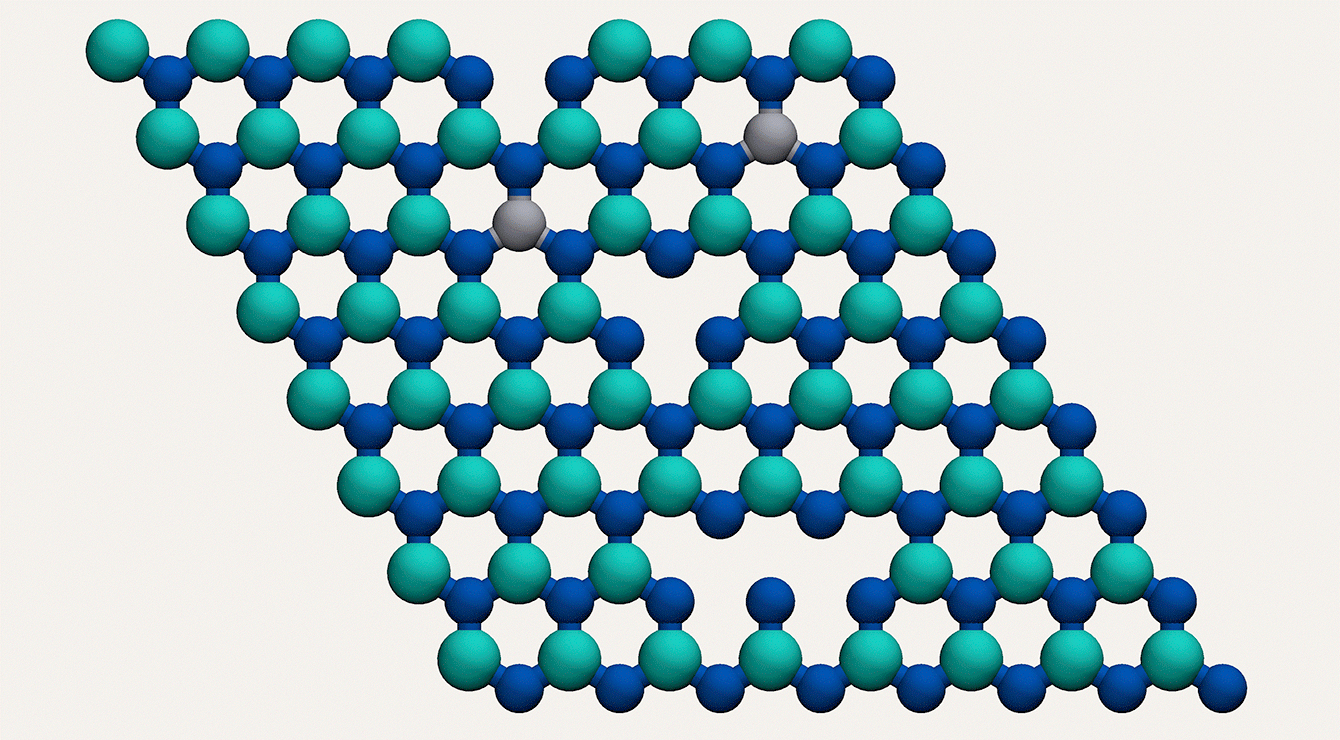2D Materials Defect Dataset at a Glance
We are pleased to introduce an easy way to manipulate data that allows non-machine learning experts to take a step towards searching for new materials with remarkable properties and may contribute to the further development of data-driven solutions for structure-to-property predictions.


Overview
The rational design of new materials, as well as materials with desired properties, is one of the central problems in modern computational chemistry and theoretical materials science. In turn, two-dimensional (2D) materials constitute an important subset of the whole library of all possible materials. In addition, one of the most attractive possibilities in the case of two-dimensional materials is the possibility of a controlled change in their properties, depending on the introduction of various point defects such as vacancies or atomic substitutions, through their chemical modification.
The 2D Material Defect (2DMD) dataset was created using density functional theory calculations to facilitate the application of machine learning methods and the development of new efficient data-driven approaches in the study and design of 2D materials. The 2DMD database contains the thermodynamic and electronic properties of defects in MoS₂, WSe₂, hBN, GaSe, InSe, and black phosphorus. This is designed to help develop machine learning models for accurate and efficient structure and property predictions.
AIRI Team
For non-specialists in the field of machine learning, we have developed a group of convenient tools to facilitate work with the data from 2DMD and included ready-made solutions for data preprocessing, numerical and visual analysis of target properties, as well as implementation of algorithms for creating data subsamples for modern state-of-the-art models.
New Materials Design: Alexey Boyko, Artem Vasilev, Roman Eremin, Aleksei Korovin, Aliaksei Krautsou, Vladimir Lazarev, Innokentii Khumonen, Semen Budennyi
Download Dataset
The provided Python scripts and tools are configured to process the published 2DMD dataset.
Run Scripts
The developed scripts and tools allows parsing structural information, collecting target values, combining and storing data in an easily accessible form.
Enjoy AI!
Try data manipulation, visualization, and subsampling to use your own data-driven approaches, machine learning models, or neural network architectures.
Examples
AIRI Institute is the largest autonomous non-profit organization in Russia engaged in core and applied research in the field of artificial intelligence.
To date, more than 90 AIRI researchers are involved in the Institute's research projects to work with the Academia, global IT community and industrial partners.
While working on their projects, the researchers of the Institute strive to obtain breakthrough results in the field of artificial intelligence and its applications, participating in the formation of the global research agenda.
Find out more




